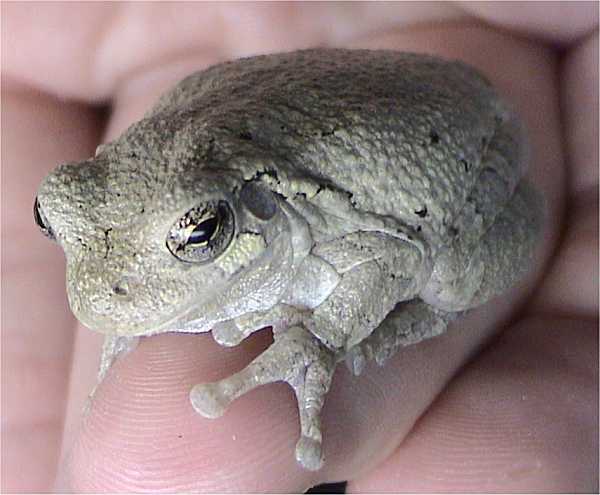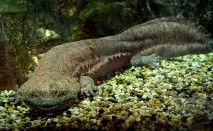
Category: Amphibians

This small, arboreal frog is widespread in the Eastern United States and Southeastern Canada. They are able to camouflage themselves by changing their skin color to match their surroundings. They change color at a slower rate than a chameleon, but can vary their hue from nearly black to almost white. The gray tree frog has an extra set of chromosomes, so is sometimes also called the tetraploid gray tree frog. An astonishing adaptation of these frogs is that they can survive freezing of their internal bodily fluids to as low as -8 degrees Celsius!
Learn more about the Gray Tree Frog at Wikipedia and Reptiles Magazine.

An Ample Amphibian
Before reptiles and mammals appeared to challenge amphibian supremacy on the land, amphibians were much larger. But while they have shrunk in size over the last 315 million years, the Chinese Giant Salamander never got the memo: at up to 5.9 feet in length and 66lbs, this amphibian is longer than your dog, and probably weighs at least as much! Compare that to Paedophryne amanuensis, the world’s smallest frog (and smallest vertebrate) who is the size of a house fly! Due to habitat loss, environmental changes, and over-hunting/collecting, the Chinese giant Salamander is critically endangered, though conservation efforts to save it are underway today.
Learn more >>
 Discover Animals is a web-based educational resource offered by the NAIA
Discover Animals is a web-based educational resource offered by the NAIA